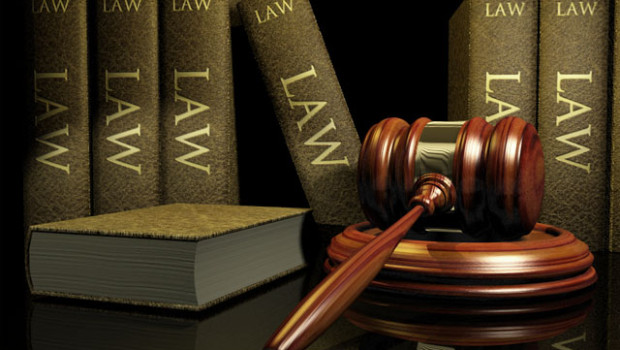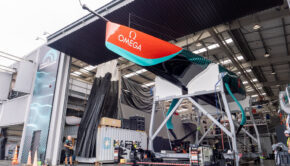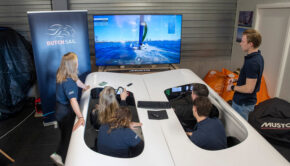A truly independent commission is needed to review America’s Cup accident
Published on May 13th, 2013
He’s back. Cory Friedman, who artfully held our hand to explain the legal proceedings between the 32nd and 33rd America’s Cups, bluntly explains what is needed to get the 34th edition back on track following the May 9 accident of the Challenger of Record, Artemis Racing…
The Andrew Simpson tragedy has yet to fully sink in, but the question that must be addressed immediately is what can be done to prevent another tragedy. The first step must be a truly independent investigation by a blue ribbon commission of trained experts completely unconnected with the participants. Something like the investigations conducted by the National Transportation Safety Board after transportation accidents, but on a much more accelerated schedule.
The proposed inquiry led by the America’s Cup Race Management (ACRM) does not even come close.
ACRM reports that this disaster was not on its radar. Really? A high tech boat breaking is off their radar, when the oceans are increasingly littered with high tech keels no longer attached to high tech racing sailboats. Getting trapped under a broken or capsized boat is off their radar when it is on every junior sailing program’s radar?
Obviously, an expert panel with much better radar and vision is necessary to analyze what happened and, much more importantly, prescribe mandatory solutions, not the “recommendations” we have seen come and go in previous investigations.
Tarting up the inquiry with local Coast Guard assets will not help. Every sailor owes the dedicated men and women in our Coast Guard a continuing debt of gratitude, but this kind of investigation is not their area of expertise. The San Francisco Police Department? Please. Not unless ACRM thinks a crime was committed.
Not only does ACRM patently lack the expertise, it is devoid of credibility. ACRM bears primary responsibility for not anticipating and guarding against exactly what happened. Allowing ACRM to investigate itself is like the airlines and aircraft manufacturers investigating air crashes.
This is not the New York Marathon. The show must go on, but only with major revisions to ensure safety. Hard questions have to be answered. Artemis Racing has had structural problems from day one. Why was it allowed to sail without an independent structural evaluation?
The team is planning to compete on July 4, using a brand new foiling boat that its traumatized crew may only have sailed for a few weeks. The conditions will be among the windiest of the year. Can do fighting spirit is one thing, but if Artemis Racing was a boxer the referee would stop the fight before anyone gets hurt, no matter how much fighting spirit remained.
The AC aims to be a major sport. Major sports are well past allowing unsafe play, even if sailors cling to romantic notions of individual volition and responsibility. Death is bad for a sport, not to mention what is far more important – the dead and their loved ones. Death doesn’t happen in NASCAR and F1 anymore, despite much higher speeds and much more unforgiving things to hit.
The AC72 is a sound class if sensibly designed, fabricated and sailed under reasonable conditions. The year of 2013 was simply too soon to sort the class out and figure out what to build and how. Another year and the class would have settled down into a sensible box. Indeed, only Emirates Team New Zealand (ETNZ), which inexplicably was allowed to hire Peter Melvin – who formulated the class – had a clue what to build.
But there is no turning back. ETNZ, a real contender, likely has committed its entire budget to the present schedule. There is probably no more water in the well. It would be unfair to them and likely unrealistic in any case to delay the event.
An independent commission will have to evaluate what needs to be done. There is no indication anyone yet involved has the technical expertise and vision. After all, they did not see it coming and they may be in for some strenuous criticism. A whitewash and trivial improvements is not what is needed. If the participants have anything useful to say, they can tell it to the independent commission.
The issues are legion even to those without technical expertise. In most cities, nobody is allowed to build a large building without a structural engineer’s sign off. These boats are bigger than a building. Perhaps they need a structural engineer’s sign off. NASCAR has spent years and brought much expertise to bear to make cars safer and crashes survivable.
What can be done to increase sailor protection and survivability? NASCAR has well thought out rescue protocols that put sophisticated assets at the crash site even before the damaged car comes to a complete stop. At minimum, helicopters and chase boats with divers with sophisticated underwater rescue and cutting equipment should never be more than 30 seconds from the boats. The boats weigh many tons; why does each hull not carry scuba gear and powered underwater cutting equipment, with all the sailors trained to use it?
If the races have to be held in a wide wind range for TV scheduling purposes, the courses have to be reconfigured for greater safety. Lots of short legs with many turning marks may make for somebody’s idea of great TV, but if bear offs are the place where disaster happens, perhaps courses with fewer bear offs are the answer. Buttheads with technical backgrounds can undoubtedly make myriad additional suggestions.
The important thing is that a commission to make the independent investigation must be assembled immediately from experts worldwide with the necessary expertise and independence from the players and put to work immediately. There is no time to waste.









 We’ll keep your information safe.
We’ll keep your information safe.